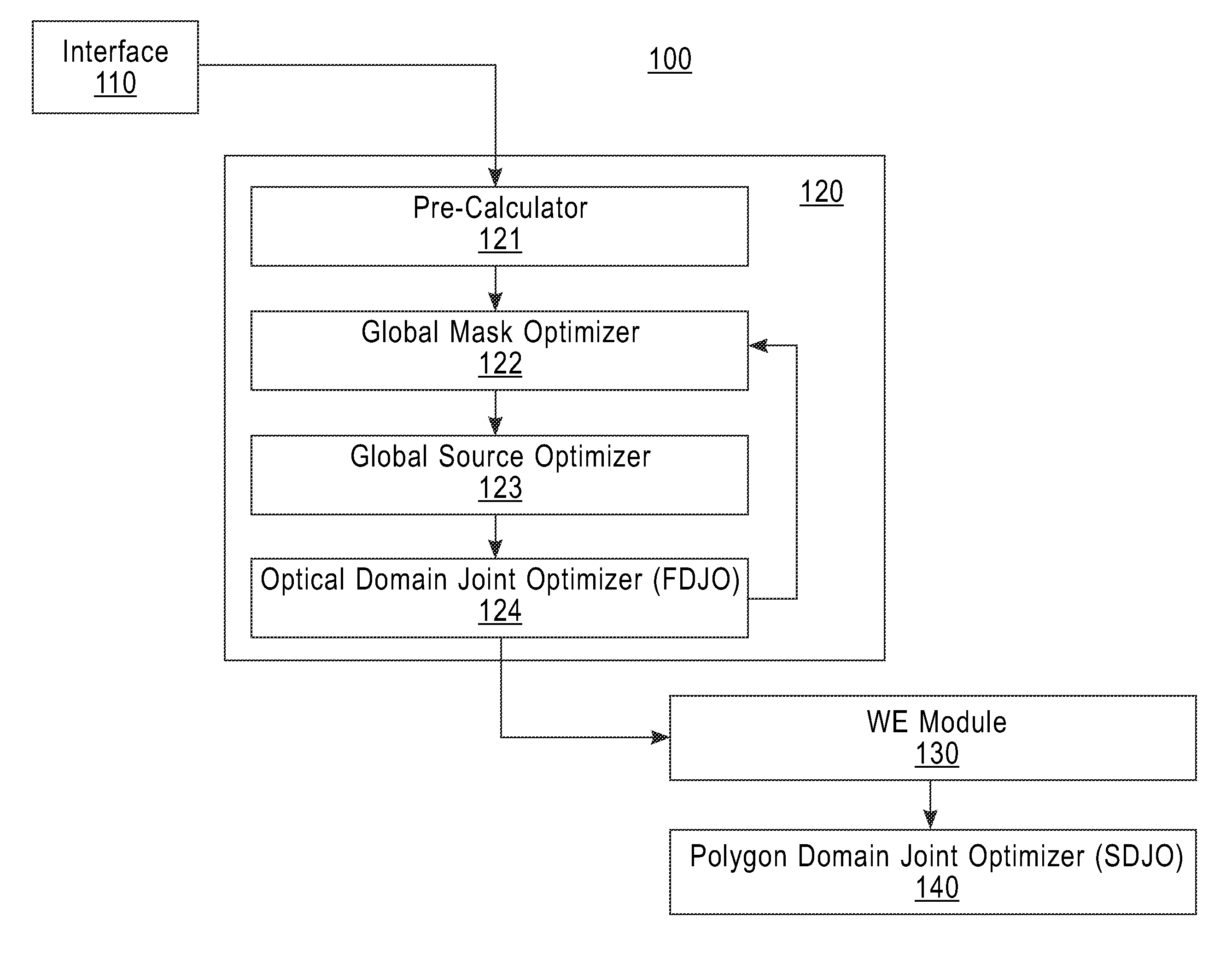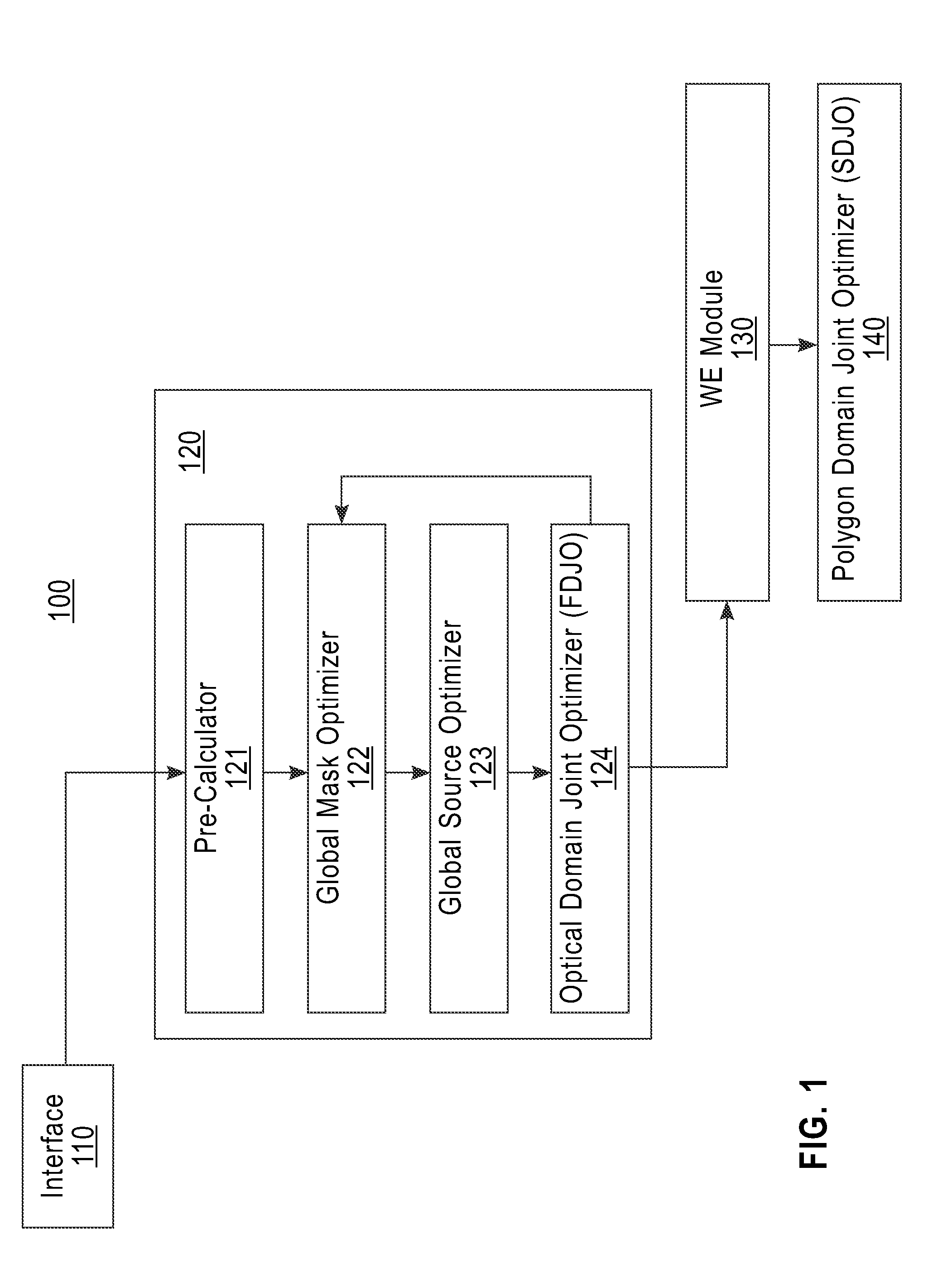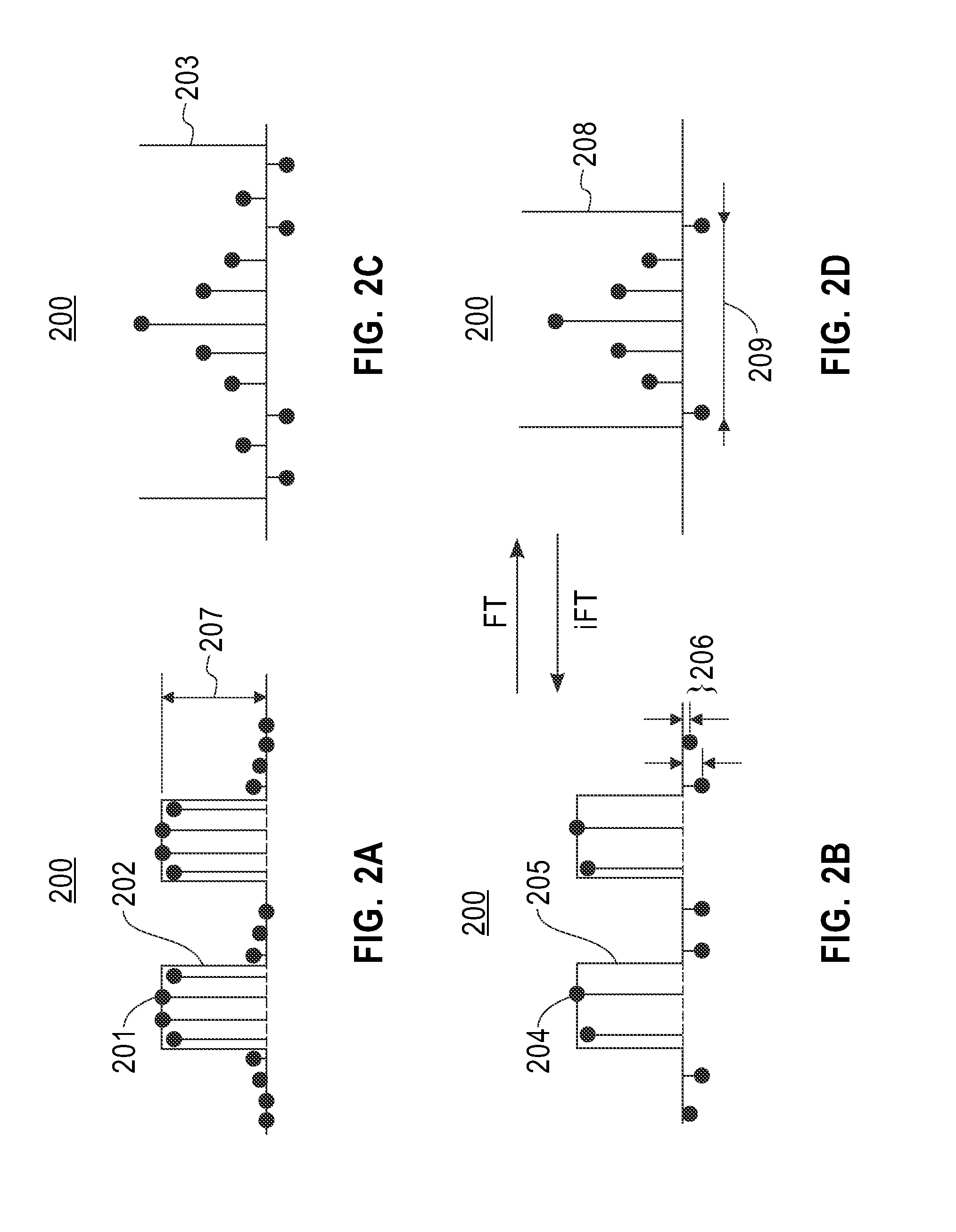Mask design method, program, and mask design system
- Summary
- Abstract
- Description
- Claims
- Application Information
AI Technical Summary
Benefits of technology
Problems solved by technology
Method used
Image
Examples
Embodiment Construction
[0039]The present invention will be described based on preferred embodiments using drawings; however, the preferred embodiments are described for the purpose of description of the invention and the present invention should not be limited to the described embodiments.
[0040]The present invention uses optical domain masks as variables during the SMO process optimization; however, the mask topology in the pupil domain is converted to the polygon domain expression at the later wavefront engineering step eventually in order to apply further improved mask optimization. In the optical domain, wavefronts are optimized according to SMO (Source Mask Optimization) technique, in a preferred embodiment.
[0041]In general, the invention includes a step in which a set of optical domain variables is generated to represent the mask wavefront during optimization, and these variables can be located in the object domain or in the pupil domain. In some embodiments, the present invention uses object domain ...
PUM
 Login to View More
Login to View More Abstract
Description
Claims
Application Information
 Login to View More
Login to View More - R&D
- Intellectual Property
- Life Sciences
- Materials
- Tech Scout
- Unparalleled Data Quality
- Higher Quality Content
- 60% Fewer Hallucinations
Browse by: Latest US Patents, China's latest patents, Technical Efficacy Thesaurus, Application Domain, Technology Topic, Popular Technical Reports.
© 2025 PatSnap. All rights reserved.Legal|Privacy policy|Modern Slavery Act Transparency Statement|Sitemap|About US| Contact US: help@patsnap.com



